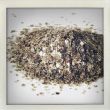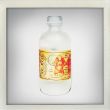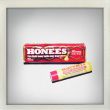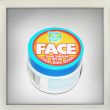After seeing, oh, thousands upon thousands of beauty products, you start to notice patterns: these products are similarly great highlighters, these moisturizers all have the same lightweight efficacy, etc. And then one day you look at the ingredients on the label and realize, “Ohhhh, these things all have coconut oil in them; that's why they're so good and rich.” Even us beauty editors have our 'ah-ha' moments. Which is what prompted us to take a closer look at five of the beauty world's key undercover players, additives that make a huge difference, which most of us never think about. Read up—you might learn something. (We did.)
Squalane
Now that the weather is taking a turn towards crappy and disgusting (or as some people like to call it, “winter'), it's time to break out the squalane. This stuff is the electric blanket of hydrating ingredients—so good you'll want to curl up under it and never come out. It's a naturally occurring lipid that makes up 12% of the sebum produced by your skin's oil glands (the rest, in case you were curious, is wax, triglycerides, fatty acids, and unicorn tears), which means it absorbs beautifully. It also has an extremely low rate of toxicity and is unlikely to cause allergic reactions, making it ideal for people with sensitivities or health concerns. You can buy it on its own—we love Between You & the Moon's Pure Olive Squalane, which is vegan, organic, and makes a great makeup remover—but it's also already in quite a few of the best moisturizers out there. If you're a fan of the way Kiehl's Ultra Facial Moisturizer sinks into your skin, for example, part of what you're enjoying is the awesomeness of squalane.
Zinc Oxide
Hopefully, at this point we all understand the importance of sun protection. And one of the very best, gentlest, and most effective sunscreens is zinc oxide. It's a physical sunscreen, so it blocks or deflects the sun's rays and begins working as soon as you put it on—none of that 20 minutes until you can go outside B.S. It's also wide spectrum, high SPF/PA+++ (the UVA protection rating system), and skin soothing (it's the stuff in diaper-rash ointment). Suntegrity makes a good zinc oxide moisturizer/sunscreen that smells like fresh-squeezed orange juice, but regardless of your brand, if you want to ensure that you're getting excellent sun protection that works swiftly and is less likely to irritate your skin, zinc's the way to go. Boo-ya.
Mica
Whenever you encounter a product that might be described as “shimmery.” or dust on Bare Minerals foundation, you've got mica on your hands, or at the very least on the tip of your brush. This powdered sparkle rock is responsible for all the light-reflecting magic in highlighters and illuminators, including Touche Éclat. It also keeps formulas that contain oil from feeling greasy, prevents clumping, and makes a good filler. It's not exactly surprising that it's in basically everything. One point to consider, though: Mica and matte aren't usually found together. There are a few products that pair a matte texture with shimmer, sure. But for the most part, when you encounter mica, you're getting something glossy or glowy, not flat. So if you hate shimmer or shine of any kind (do you also hate happiness?), it's easy to avoid—just check your labels for mica.
Beeswax
In a world of confusing parabens, mounds of mineral oil, and silicone emollients, beeswax is the old standby for a reason: it works and it's super versatile. Research suggests that beeswax-based hand creams are actually a better barrier than synthetic alternatives, in fact. Given that, for those of us in the Northern hemisphere at least, the season of Arctic blasts and painfully dry indoor heat is upon us, maintaining healthy moisture levels is doubly important, too. If you have environmental concerns about mineral oil—it's a petroleum derivative, so some people don't like to support its use—beeswax is a great alternative. Try Waxeleneif you're an Aquaphor addict. You also can't go wrong with classic Burt's Bees lip balm, which Nick swears by because it's the only lip protector he's found that's really, truly matte and because it's like good breath on a stick. “People always ask me for a piece of gum.” he says, “and I'm like, 'I don't have any—it's Burt's Bees.' It freshens your breath completely.” So there—a ringing endorsement.
Colorants
Iron oxide. Manganese Violet. Ferric Ferrocyanide. These aren't meth ingredients (thanks for the chemistry/drug education, Walter White), they're common colorants, alongside perhaps more familiar-sounding additives like carmine and ultramarine. Pigments are important, obviously, because they give products their hue, but people can also have allergic reactions to them without understanding why. Not all colorants are likely (or even remotely likely) to be allergenic, but they're often the last thing people think of when evaluating what in a product is causing them trouble. So if you're having a weird reaction to mascara, blush, or even moisturizer, make sure to check that—alongside the other ingredients—you don't have a sensitivity to the pigments or dyes in your product. Need help looking up pigments? The Environmental Working Group has a handy list detailing which ones are more or less likely to be irritants.
And no, there will not be a quiz on this.
Photos by Mathea Millman.










